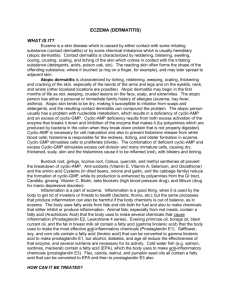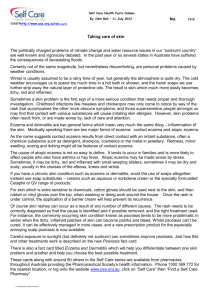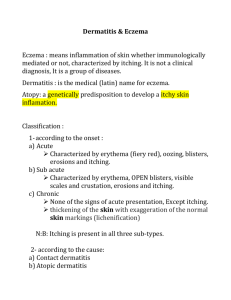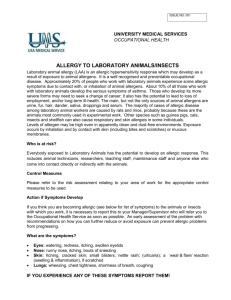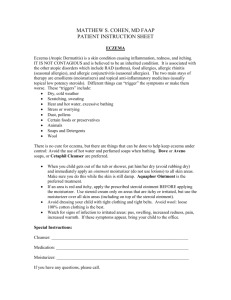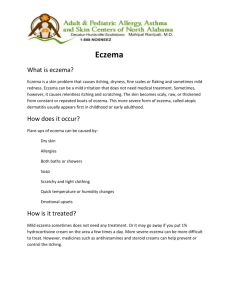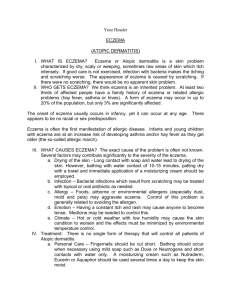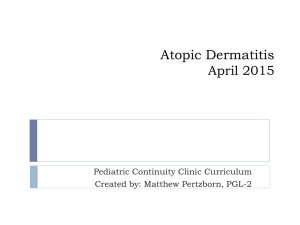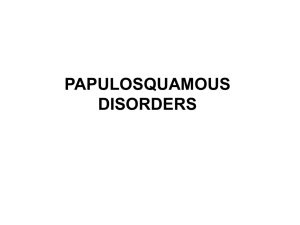C - Rakshith Hospital
advertisement
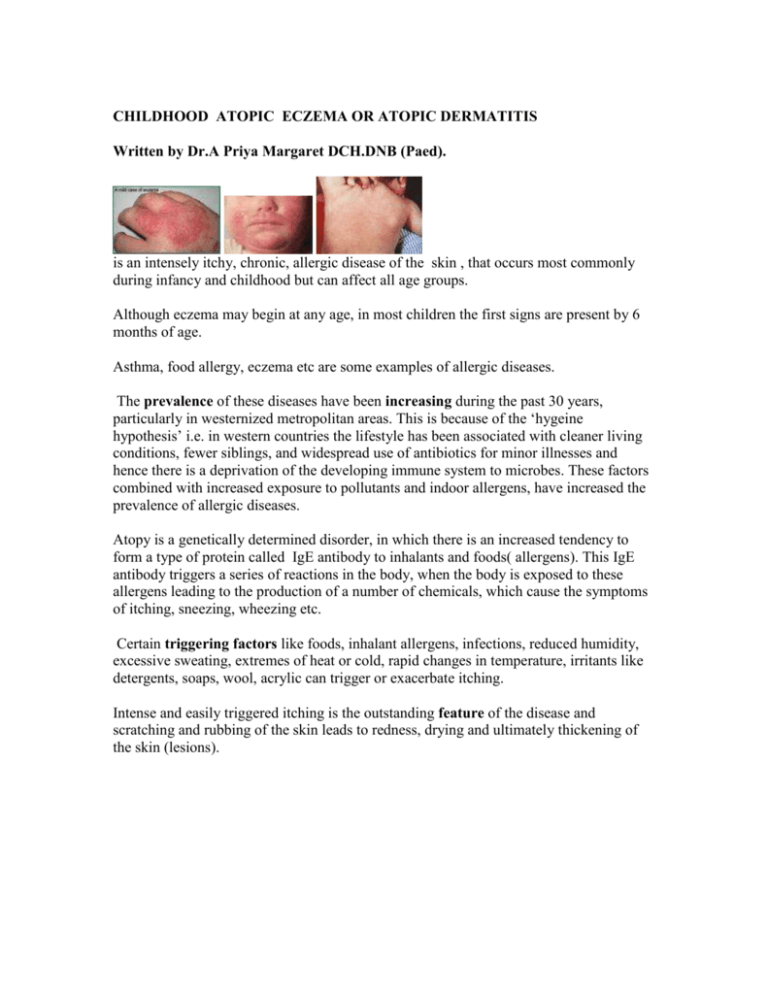
CHILDHOOD ATOPIC ECZEMA OR ATOPIC DERMATITIS Written by Dr.A Priya Margaret DCH.DNB (Paed). is an intensely itchy, chronic, allergic disease of the skin , that occurs most commonly during infancy and childhood but can affect all age groups. Although eczema may begin at any age, in most children the first signs are present by 6 months of age. Asthma, food allergy, eczema etc are some examples of allergic diseases. The prevalence of these diseases have been increasing during the past 30 years, particularly in westernized metropolitan areas. This is because of the ‘hygeine hypothesis’ i.e. in western countries the lifestyle has been associated with cleaner living conditions, fewer siblings, and widespread use of antibiotics for minor illnesses and hence there is a deprivation of the developing immune system to microbes. These factors combined with increased exposure to pollutants and indoor allergens, have increased the prevalence of allergic diseases. Atopy is a genetically determined disorder, in which there is an increased tendency to form a type of protein called IgE antibody to inhalants and foods( allergens). This IgE antibody triggers a series of reactions in the body, when the body is exposed to these allergens leading to the production of a number of chemicals, which cause the symptoms of itching, sneezing, wheezing etc. Certain triggering factors like foods, inhalant allergens, infections, reduced humidity, excessive sweating, extremes of heat or cold, rapid changes in temperature, irritants like detergents, soaps, wool, acrylic can trigger or exacerbate itching. Intense and easily triggered itching is the outstanding feature of the disease and scratching and rubbing of the skin leads to redness, drying and ultimately thickening of the skin (lesions). The distribution of lesions varies according to the patient’s age. During infancy, the dermatitis (inflammation of the skin), involves the face, scalp, the hands and legs. The diaper area is usually spared. In older children, the lesions occur along the skin folds of the hands and legs. The disease becomes less severe as the person grows older, however leaving an adolescent or adult with skin that is prone to itching when exposed to irritants. A majority of children with atopic eczema have allergic rhinitis (sneezing) and asthma. Certain eye abnormalities may be associated with atopic dermatitis. Eyelid dermatitis may result in visual impairment from scarring of the cornea ( a part of the eye).A conical deformity of the cornea may occur due to repeated rubbing of the eyes. Cataracts (opacification of the lens) can also occur in atopic dermatitis. Children with atopic eczema often have disturbed sleep and may have an altered family and interpersonal interactions. The measures to prevent atopic eczema include identification and elimination of the triggering factors: Skin hydration should be maintained. Luke warm soaking baths for at least 20 minutes followed by the application of an emollient like petroleum jelly to retain moisture is to be practiced. Excessive bathing and the use of irritating soaps and detergents should be avoided. Soaps having a minimal defatting activity and a neutral pH are preferred. The following soaps are recommended by standard textbooks of Paediatrics “Examples of soaps that are usually not harmful to skin are Dove, Oilatum, Neutrogena, Lowila, Aveeno, Basis and Alphakeri”. New clothes should be laundered before use to avoid residual chemicals. Liquid rather than powder detergent and adding a second rinse cycle will facilitate removal of the detergent from washed clothes Clothing worn just next to the skin should be non-irritating and made of absorbent (cotton) material. Sports like swimming are well tolerated than other sports involving intense perspiration, but chlorine should be rinsed off immediately and the skin lubricated. Children n with eczema may have allergies to some common food allergens (e.g, egg, milk, fish, wheat, soya, and peanut).Potential allergens should be identified by carrying out skin prick allergic tests and exclusion of suspected allergens from the diet can lead to improvement. But extensive, unproven elimination of foods can lead to dietary deficiencies in growing children and should not be done. Dust-mites, animal dander, grass and pollen can cause increase in the symptoms. Dust mite avoidance measures include dust mite – proof encasings on pillows and mattresses, washing bedding in hot water weekly and removal of bedroom carpeting. Persistent scratching is to be avoided to facilitate rapid healing of existing lesions. Nails are to be cut short and edges are to be filed. Eczema is more severe in young children. As age advances improvement in the symptoms occurs, though some adolescents and adults will have hand dermatitis, if their daily activities require repeated hand wetting. Persistent itching in a child disturbs sleep and produces psychological trauma to the child. Parents of children with atopic ezema should identify and scrupulously avoid the exacerbating factors (The medical information in this article is provided as an information resource only, and is not to be used or relied on for any diagnostic or treatment purposes. This information is not intended to be patient education, does not create any patient-physician relationship, and should not be used as a substitute for professional diagnosis and treatment. If you suspect that your child has a medical problem or condition, please contact your paediatrician.)

